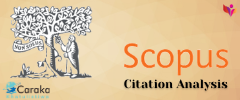PENINGGALAN SITUS MEGALITIK SEKALA BRAK DAN IMPLIKASINYA DALAM PEMBELAJARAN SEJARAH LOKAL DI SEKOLAH DASAR
Abstract
The purpose of this study is to 1) describe in depth the megalithic relics of Sekala Brak sites; and 2) to describe the design of local history learning materials based on megaliths relic of Sekala Brak. This research method is descriptive qualitative. Techniques used in data collection are techniques of observation, documentation, and literature study. Analysis of the data presented descriptively, that is to articulate and describe the findings of the data according to the problems studied. The results showed that: 1) The archeological relic found in the megalithic sites of West Lampung consisting of Situs Batu Brak, Batu Jagur, Megalitik Telaga Mukmin, Megalitik Batu Kepapang, Batu Bertulis (Prasasti Hujung Langit), Batu Tameng, Batu Jaya, Batu Bertulis Belalau, Batu Spadu/Batu Putri, Batu Nakka/Batu Tegak, dan Situs Batu Raja; 2) Lampung local history materials that can be implemented in elementary school learning include: a) Customs, b) Traditional arts (dance, rupa / craft, music), c) Historic places, d) Habits and philosophy of life, e) The relationship of kinship, f) folklore, g) The system of government (Kingdom, sultanate, keratuan), h) Heroes and heroism, i) Language, j) of local historical events of the colonial era, k) local historical events independence era, l) local historical events post-independence era, m) local history of contemporary events, and n) Historiography Lampung in the media.
Keywords: megalithic Site Sekal Brak, local history learning materials, elementary school.
Full Text:
PDFReferences
Cahyono, M. D. (2017). "Menepis Alienasi terhadap Sejarah Daerah Sendiri: Pembelajaran Sejarah Lokal Secara Proporsional di Sekolah". Tersedia, Online, https://patembayancitraleka.wordpress.com, 7 September 2016, diunduh pada Maret 2017.
Gagne, R. , Leslie J.B., dan Walter W.W. (1992). Principles of Instructional Design. Philedelpia: Harcourt Brace Jovanovich.
Hafid, A. (2013). “Peningkatan Efektivitas Pembelajaran melalui Pemanfaatan Media Teknologi Informasi”. Tersedia online, http://anwarhapid.blogspot.co.id. Selasa, 01 Januari 2013, diunduh pada Oktober 2015.
Hardjodipuro, S. (1991). “Dua Paradigma Penelitian Ilmiah”. Jakarta: Pidato Pengukuhan Guru Besar IKIP Jakarta.
Lightman, A. J., & French, V. (1978). Historians and The Living Past, The Theory and Practice of Historical Study. Arlington Heights: Harlan Davidson.
Mulyana, A., & Gunawan, R. (ed). (2007). Sejarah Lokal: Penulisan dan Pembelajaran di Sekolah. Bandung: Salamina Press.
Priyadi, S. (2012). Sejarah Lokal, Konsep, Metode, dan Tantangannya. Yogyakarta: Ombak.
Siska, Y. (2015). ANALISIS KEBUTUHAN BAHAN AJAR SEJARAH LOKAL LAMPUNG UNTUK SEKOLAH DASAR. Mimbar Sekolah Dasar, 2(2), 199-211. doi:http://dx.doi.org/10.17509/mimbar-sd.v2i2.1330.
Siska, Y. (2016). Konsep Dasar IPS untuk SD/MI. Yogyakarta: Garudhawaca.
Sopandi, A. (2015). “Studi Kebijakan Penerapan Bahasa, Budaya dan Sejarah Bekasi sebagai Muatan Lokal di Sekolah”. Laporan Penelitian, Universitas Islam "45" Bekasi.
Supardi, S. P. (2006). Pendidikan Sejarah Lokal Dalam Konteks Multikulturalisme. Cakrawala Pendidikan Edisi Februari 2006, XXV(1), 117-137.
Supardi, S. P. (2014). Pendidikan Multikultural dalam Pembelajaran Sejarah Lokal. Jurnal Pembangunan Pendidikan: Fondasi dan Aplikasi, 2(1), 91-99.
Widja, I Gde. (1989). Sejarah Lokal, Suatu Perspektif dalam Pengajaran Sejarah. Jakarta: Depdikbud.
DOI: https://doi.org/10.53400/mimbar-sd.v4i2.6489
Refbacks
- There are currently no refbacks.
Copyright (c) 2017 Mimbar Sekolah Dasar

This work is licensed under a Creative Commons Attribution-ShareAlike 4.0 International License.
View Mimbar Sekolah Dasar Stats



.png)
